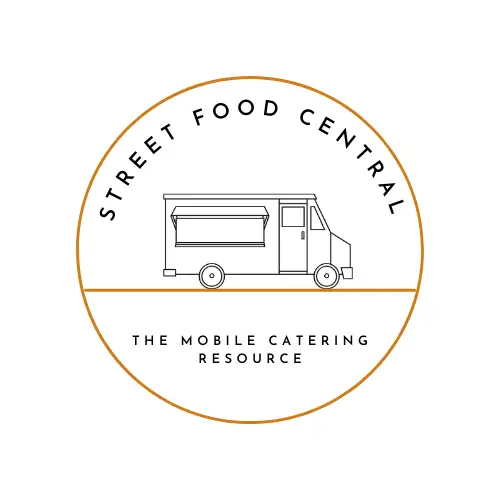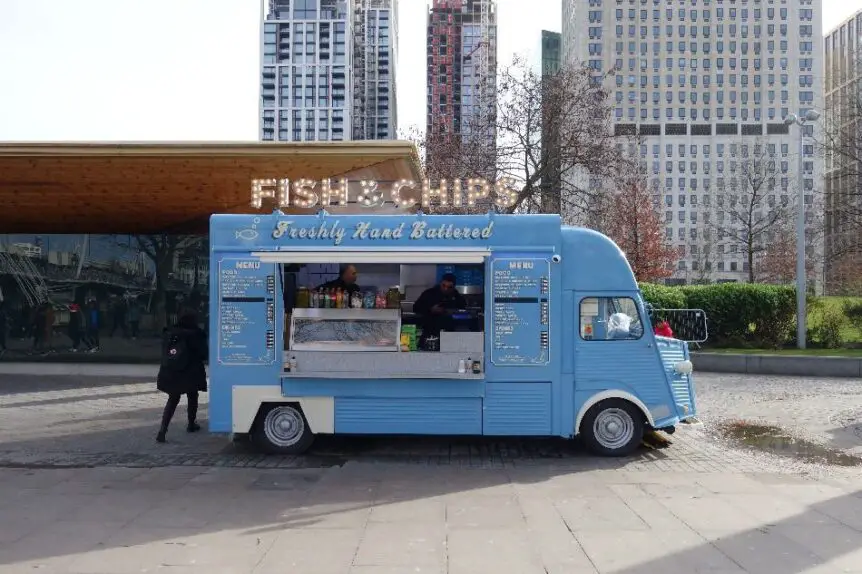Like any relatively new industry, street food is evolving. So what are the food trends for 2023?

The street food industry has seen massive growth in recent years. In the US in 2018 it was worth $3 billion per year with an annual growth of 4.2% between 2013-2018. In the UK it has grown faster than the fast food industry and was estimated at a total value of £1.2 billion in 2018.
And like any other industry, the street food scene continues to change and evolve. So what are the street food trends for 2019? Things such as pop-up experiential marketing; food hall style pop-ups and the shift to a digital presence are some of the new trends we are likely to see in street food in 2020 and beyond.
In this article, I will map out the top 10 street food trends for 2010 that I believe are shaping the street food industry.
Street Food Trends 2020
- Pop-up experiential marketing
- Private & corporate events
- Biodegradable packaging
- Food hall-style pop-ups
- Having a digital presence
- Social Media
- The growth of digital platforms
- The vegan street food trend
- Regeneration (street food as social policy)
- Restaurant chains going mobile
1. Pop-up experiential marketing

Marketing agencies and brands have only just started to notice the street food trend and the opportunity that comes with it.
What better way to capture attention and get in front of thousands of people than branding a food truck and its food and drink packaging at a festival with a logo or message?
Street food vendors are therefore increasingly working with these companies. And as the street food industry evolves, you will more likely see over the coming years food trucks and food stalls branded with third-party logos and messages.
Here are a few companies already offering this service:
New York Food Truck Association
2. Private & corporate events
No longer is street food and food trucks just about festivals and food markets. Food traders are now getting booked for all types of private and corporate events.
From feeding hundreds of guests at weddings and staff parties to large corporate events and expos at conference centers.
This is definitely a growing trend to watch out for as street food becomes more popular.
3. Biodegradable packaging

We all know the harm of single-use packaging to the environment, such as plastic straws and cups. This growing awareness among the public means customers expect their food or drink to be served in compostable or biodegradable packaging.
Biodegradable packaging is also becoming a mandatory requirement, set by event organizers, for food traders to sell their products at public events. There is even talk of a tax on single-use plastics in the UK.
Over the coming years, biodegradable packaging will most likely become compulsory.
Vegware is one of the leading companies in the UK producing compostable products. They have a wide range of Eco-friendly disposable products such as a smoothie, coffee cups, cutlery, and food cartons. These can all be found on Amazon here.
Related articles:
4. Food hall-style pop-ups
Here in the West, we are no longer a manufacturing economy of goods and a lot of factories have closed, leaving a lot of disused space. The question becomes therefore what to do with it?
One of the solutions over recent years has been to create food hall stall pop-ups. Here a number of food stalls and food trucks congregate to feed and water large groups of people. Almost like an illegal rave, but with tacos.
Some examples of warehouse pop-ups include:
Street Feast (Hawker House)
5. Having a digital presence
Like pretty much every industry you can think of, that is now online or at the very least in the process of moving that way, so is the street food industry.
More and more street food traders, food truck businesses, and mobile caterers now have websites. This is becoming even more important with the increased demand from marketing agencies and people looking to book traders for private and corporate events.
Having a website and getting found on search engines is a street food trend we are likely to see grow throughout 2019.
6. Social Media
You may not know but images of food are one of the most popular categories of images online. So pictures of street food are a natural fit with this type of medium.
Having Instagram or Facebook accounts, and showcasing food and drinks is becoming pretty much the norm for mobile caterers. It’s a good way to let customers know what food market or festival they will be at and an easy way to communicate.
Related articles:
7. The growth of digital platforms
Just like there are digital platforms for sharing images or for finding tradespeople, there are now third-party platforms emerging for street food and food trucks.
For example, just like with having a social media account, people can find local street food markets or events food or book food trucks for all types of events through an app or website.
Websites:
8. The vegan street food trend

Vegan food, in general, has increased massively in popularity over recent years as people look to reduce their meat consumption and for ethical reasons.
UK’s vegan meat alternative market is set to grow 25% in the next four years and in the US there has been an increase of 600% of people identifying themselves as vegan over the last 4 years.
This trend is no doubt being filtered down to the street food industry where more and more street food vendors are starting to cater to this demand.
A number of vegan food trucks and stalls have popped up over the last few years selling everything from vegan burgers and hot dogs to vegan pizza.
If you are looking for some vegan inspiration for a street food business, I recommend the book “vegan Street Food” from Amazon. It has a wide range of Asian street food recipes to choose from.
9. Regeneration (street food as social policy)
As high streets and areas with historically low investment continue to struggle, local governments and private developers are looking for solutions for regeneration.
One of the ways they have started to do this is by working with event companies to encourage pop-up street food markets in retail spaces and public areas.
The developers of a run-down part of Manchester city center have appointed street food event organizers to run a changing program of events in part of the new development.
Another case of Street food regeneration is the upcoming £2.3 billion redevelopment of Elephant and Castle, where Mercato Metropolitano will launch a 17.000 sqft food and dining area.
Local government and developers have realized street food is a relatively cost-effective way to revitalize an area; bring communities together and help to foster local entrepreneurship.
10. Restaurant chains going mobile

Established restaurants and chains are now struggling and closing at an unprecedented rate. Jamie Oliver closed 12 branches of his Jamie’s Italian chain in 2018, whilst Strada has had to close 10 of its 26 stores.
One of the main advantages of being a mobile caterer or food truck owner is that you are mobile. This means if the footfall drops off in a particular location you can move to busier areas.
If you are a fixed brick-and-mortar business, on the other hand, you don’t have this luxury.
However, some chains are becoming increasingly aware of the street food trend and are seeing it as an opportunity to adapt and reach new customers.
Some examples include Wahaca, who have opened a small pop-up in Shoreditch serving street food; and Yo! Sushi now has a minimal pop-up in Boxpark, London.
Conclusion
Street food as an industry has seen some impressive growth over the last decade and continues to be a moving target. This trend no doubt has been a contributor to the decline of established food chains on the high street.
In 2019 and over the coming years some of the street food trends we are likely to see include:
- Established food chains moving to a pop-up model, as they struggle to adapt to the changing economic environment.
- Experiential marketing in the form of branded food truck pop-ups by marketers looking to promote their message.
- Street food is used as a social policy by local governments and developers to regenerate areas.
- The growth of third-party street food platforms.
- Food hall-style pop-ups.
- A growing digital presence.
- Biodegradable and compostable packaging becoming compulsory.
- The growth of private and corporate events in street food.
It’s an exciting time to be part of this industry and if there are any trends that you see drop a comment in the box below.
Gavin D is the founder of Street Food Central and Tru Foo Juice Bar Co. and has worked in the mobile catering industry for over 7 years.

